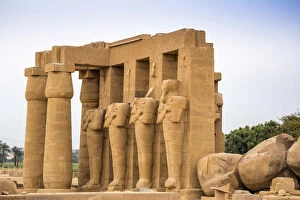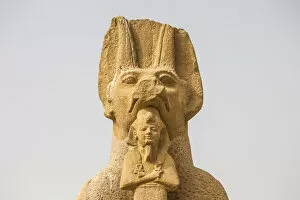Mortuary Temple Of Ramses Ii Collection
The Mortuary Temple of Ramses II, located on the West Bank of Luxor in Egypt, is a magnificent testament to the grandeur and power of ancient Egyptian civilization
All Professionally Made to Order for Quick Shipping
The Mortuary Temple of Ramses II, located on the West Bank of Luxor in Egypt, is a magnificent testament to the grandeur and power of ancient Egyptian civilization. Also known as The Ramesseum, this temple complex was dedicated to the pharaoh Ramses II, one of Egypt's most celebrated rulers. Despite its current state of ruin, with fallen columns and scattered traces of its former glory, the Temple of Ramses II still exudes an aura of majesty and awe. As you wander through its vast courtyards and halls, you can't help but be transported back in time to an era when gods were worshipped and pharaohs ruled supreme. One cannot miss the imposing Sphinx at the entrance of The Ramesseum. This iconic statue stands guard over the temple grounds, silently witnessing centuries pass by. Its weathered features tell tales untold; stories that have been lost in time but are preserved within these sacred walls. Although much has fallen into disrepair over thousands of years since its construction during Ramses II's reign in 13th century BC. , there is still enough left standing to give visitors a glimpse into ancient Egyptian architecture and religious practices. Intricate carvings depicting scenes from battles won or offerings made adorn many walls throughout the complex. As you explore further into The Ramesseum's inner sanctums, it becomes evident why this mortuary temple was built - as a place for worshiping Ramses II even after his death. It served as both a memorial site for his eternal soul and a center for religious ceremonies honoring him as a divine ruler. Today, despite being partially destroyed by earthquakes and looting over centuries past, visiting The Mortuary Temple of Ramses II remains an unforgettable experience. Standing amidst these remnants allows us to connect with history on a profound level – reminding us that even great civilizations eventually crumble under time's relentless march forward.


